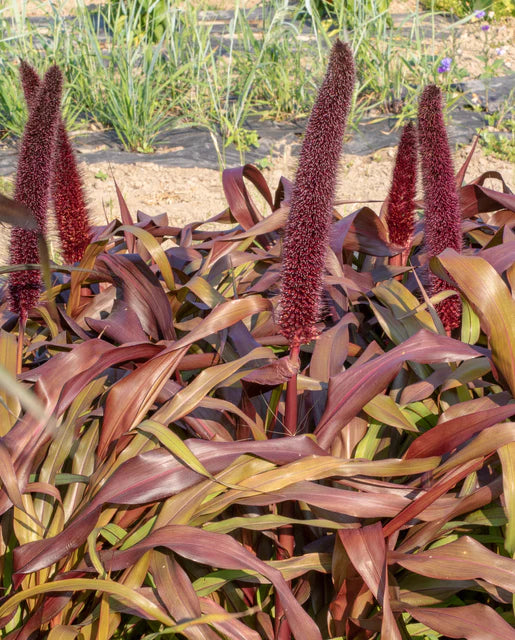67 products
67 products
Sort by:
Flower Seeds
With so many to choose from and only so much space in the garden, Tall Blend sunflower seeds will allow you to enjoy a mixed planting. This package combines varieties of tall sunflowers to brighten up the back of the garden. Grow a forest of giants that attract pollinators to your garden and also feed the birds once the flowering show is over. All plants in this collection will grow to 2-4m (6-12').
The high performing Potomac snapdragon series was selected for stem and flower quality for production during long summer days. Tall, strong stems have long, refined spikes of orange flowers with accents of yellow and pink. 80-120cm (32-48") tall plants can be grown in the field and garden, or in a greenhouse.
Nicotiana alata. This flowering tobacco stands regally in the garden at 1-1.5m (3-5') tall, with a cascading head of pure white, tubular flowers that attract moths and hummingbirds. It looks splendid among other tall flowering plants such as Agastache and foxgloves. Grow Jasmine Tobacco Nicotiana seeds in a warm spot in your garden, in full sun. Pollinated by moths, this Nicotiana's flowers become particularly fragrant after dusk, so plant some near a window and let the scent waft in during summer.
Annual
First year flowering foxgloves with uniform blooms on vigorous plants. Dalmation White has bright white bells with contrasting dark purple freckles. Flower bells form on one side of the stem, sitting close together on sturdy stems. Grow these vigorous plants in the garden or in pots as a hardy annual.
Callistephus chinensis. The Blues Mix is an excellent choice for the cut flower garden. It blooms from July to October on strong, upright, multi branching stems to a height of 75cm (30"). The mix of large and small flowers appear in blues, purples, and white, but all with the ruff of fully double petals. All are attractive to pollinating insects and hummingbirds, and they look magnificent in a large bouquet. Be sure to take frequent harvests of cut flowers, or at least keep the plants dead-headed to prolong and enhance the bloom time. Please follow the planting and spacing instructions closely.
Annual
Pennisetum glaucum. With its cousins Purple Majesty and Jade Princess, Copper Prince Millet is the very picture of ornamental grass. The golden green foliage darkens at the points most exposed to the sun, becoming more mahogany in tone. About mid summer, the rush-like panicles begin to emerge, rising to a height of 90cm (36"). They become bushier and bushier and then form a layer of densely packed, dark brown seeds. This grass looks tantalizing in mass plantings or rows used to define garden edges. But it is decorative enough to warrant individual specimens in patio containers. It was a hit in our field trials.
Annual.








